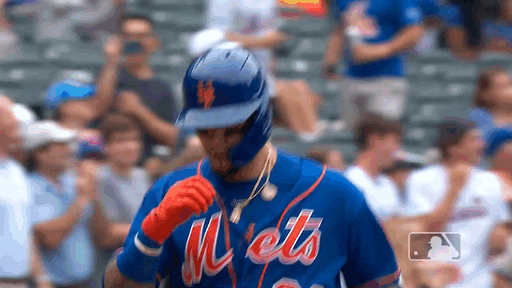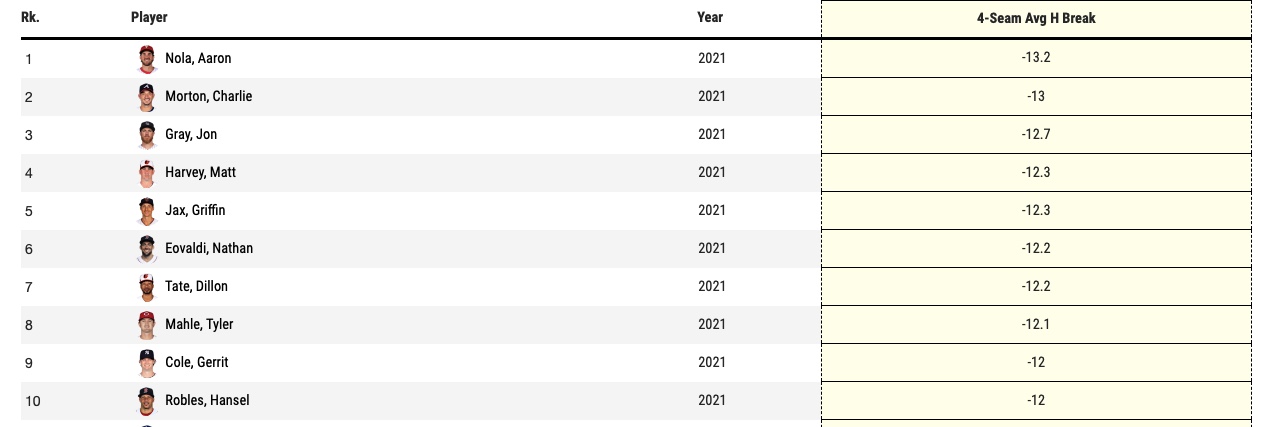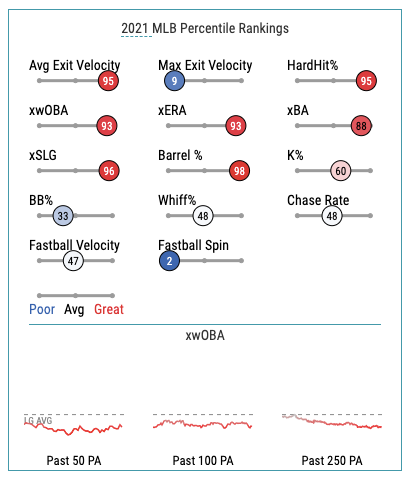The stretch run is here. The time when only true baseball diehards still check box scores with the excitement of April. The time when a portion of your league checks out for football season, leaving you with ample opportunity to pounce on your relatively neglected waiver wire. In fact, the stretch run is arguably the easiest time to manage your team, as there are no long-term qualifiers when debating a player profile and fewer owners are fighting for the next breakout on your wire.
I implore you to follow the fire! Ditch the Bellingers of the world with little time left to right their sinking ship. Despite the heavy draft capital you spent on the Eugenio Suarez-types, these players are hurting more than they are helping now. Ditch em.
So who do we move onto you say? Roll up your sleeves, dust off your $200k earings and recognize the destructive power of your thumbs as we mine the fields of legitimacy.

Ryan’s first 12 IP in his major league career have given him the following stat line:

Judging by the 91.4 mph fastball velocity Ryan has shown in his brief time in the majors, you would be shocked to see both the elite whiff rate and K% Ryan has racked up through the minors. Since his minor league debut in 2018 Joe Ryan has had elite K/9s that have never gone below the 11.84 which he put up in TB AAA this season. For context, Gerrit Cole is currently at 12.31 K/9 on the season.
What could explain this discrepancy? Here is a pitcher that doesn’t have overpowering stuff but has gotten Ks at a consistently elite level since he turned pro in 2018. First, we will look to the movement Ryan gets on both his 4 seam fastball and his changeup.
Here is the list of average 4-seam fastball horizontal break for pitchers with over 250 PA on the season:
Note: negative horizontal movement indicates arm side run for a righty and positive horizontal movement indicates glove-side run for a righty. Naturally, lefties will have more positive break while righties will have negative break.

Joe Ryan currently has a horizontal break at -10.9 inches which would slot him 19th on this list. Despite a few duds on this list (like Matt Harvey) this is an impressive list for Joe Ryan to find himself on in his debut season. This partially explains how Ryan has been able to get so many whiffs despite the lack of high velocity. He is debuting with borderline elite movement on his primary pitch which he throws over 66% of the time.
This movement caused Patrick Wisdom to have an existential crisis mid-swing, just beautiful.
Adding to the allure, here is the list of changeup horizontal movement for pitchers with 250 PA:

Ryan’s horizontal movement on his changeup now sits at 17.9 inches which would tie him for third on this list alongside stalwarts like Charlie Morton, Chris Bassitt, and Lance McCullers. Obviously seeing Griffin Canning on this list may give some pause, but this is really an exercise to better understand Ryan’s repertoire than anoint him a stud based on horizontal movement. This context adds to the growing evidence that Ryan offers something special on the mound that overcomes his lack of high-end fastball velocity.
This is a changeup, not a particularly well-placed one, but the dramatic arm side run exemplifies the aforementioned elite movement.
Furthermore, Ryan has always had a unique delivery. Eno Sarris called our one layer of this on Twitter:
Leads with the elbow so he hides the ball longer, like Yusmeiro Petit! The invisiball strikes again! https://t.co/jv8LcfuclD
— Eno Sarris (@enosarris) September 9, 2021
Supplementing this deception, Joe Ryan has a starkly lower arm slot than the average pitcher. This was profiled in a piece by the Athletic’s Dan Hayes that attributes his unique delivery to his history of playing Water Polo:
“Ryan’s 5.1-foot average release point is the second-lowest height among all starting pitchers in the majors this season behind only Milwaukee’s Freddy Peralta (5 feet). His minus-4.1 vertical attack angle is also the third-lowest among starting pitchers this season.
The combination of the two factors creates an optical illusion that makes it appear as if the ball will sink only for him to be able to ride it above hitters’ barrels.
Dylan Woodhead, who played water polo with Ryan for two years at then-Sir Francis Drake High in San Anselmo, Calif., sees a lot of similarity between the way his former teammate attacks hitters to how he attacked the net. Woodhead, who also played high school baseball before committing to the pool, reunited with Ryan last month in Tokyo as each chased their Olympic dreams. While playing for Team USA water polo, Woodhead had an opportunity to watch both of Ryan’s starts for Team USA baseball.
“His arm angle is very unique and low and it definitely is affected by water polo,” Woodhead said. “You can see that pretty easily with a lot of the professional water polo players, how versatile their arm angles are and how much they’re using their torso and core to generate power. Joe obviously generates a lot with his legs too, but there’s definitely some parts of the water polo throwing motion that he’s kind of hung onto while throwing the baseball.”
I love that Joe Ryan, who was a water polo player, just did a pre-inning stretch on the mound that looks very similar to what swimmers do on their starting block. (Watch until the shoulder shimmy at the end.) pic.twitter.com/sUirIxQ6mv
— John Bonnes (@TwinsGeek) September 9, 2021
At this point it should be clear that Joe Ryan’s deception and resulting strikeouts are not a mirage. However, there is some cause for concern given Ryan lines up to pitch against the Blue Jays twice to finish the season, in between starts against Cleveland and the Cubs. Regardless, Ryan truly offers a novel and unique profile which provides multiple angles to explain how he is able to sustain his success despite the lack of even average fastball velocity. This success has been proven at every level—here are Ryan’s minor league career lines:

Given Ryan’s starling K-heavy minor league track record, scintillating start to his big league career and quantifiable deception from both his horizontal movement to his unique delivery—Ryan should be a priority for anyone in need of pitching for the stretch run, especially if you need Ks.
If it wasn’t obvious to you by beaming words, Joe Ryan is
LEGIT
Ranger Suarez

One of these things is not like the other—looking at Ranger Suarez’s first 4 years in the majors, you’ll see a lefty evolving from a starter to a decent bullpen arm and now suddenly performing as an elite SP seemingly out of nowhere. Sure, you can look at his .239 BABIP, his minuscule 1.38 ERA compared to his 2.82 xERA, or his 3.57 xFIP and surmise regression is coming. That would be true. But, is there something more going on here? Has Suarez shown enough for us to buy him as a dramatically changed profile? Let us dig.
Since Suarez took a spot in the rotation on August 2, through 36.2 IP he has not allowed even one home run. His 60.7% groundball rate, which is top five in the MLB among pitchers with 250 PA, suggests that his ability to avoid the HR ball may be legitimate. Obviously, the .35 HR/9 he currently holds is due to rise given the anomalous homerless streak he is on, but this is a skill set that seems supported by his sinker-heavy repertoire. This is further supported by the 2.5% barrel rate he is allowing which is in the 98th percentile of all pitches. In lieu of giving a full narrative to each of his supporting stats, let’s look at his full savant profile:

Effectively, every metric on the page supports the legitimacy of Suarez. Obviously, one exit velocity of 115.8 mph can be mostly ignored when you’re in the 95th percentile for average exit velocity. But for kicks, I actually looked this one up. Ironically enough, this was also a rather routine groundout that really goes further in showing how great Suarez is at inducing groundballs:
No, for real that ball was hit 115.8 mph by Ketel Marte.
Primarily, the one angle of true concern for Suarez is his BB rate of 9.6% which is in the bottom third of the league. Unfortunately, there is no context I can provide that directly quells those concerns. This is the reason his xFIP is where it is and also is the main thing holding Suarez back from really taking that next step. Regardless, his elite groundball-inducing stuff has compensated for this defect so far.
Now looks look at his pitch mix over the last two years to see what specifically has changed for in his repertoire:

With a dramatic increase in usage of both his sinker and changeup at the expense of his slider—Suarez has found more success on the mound than he ever has at the big league level. Add in a 3 mph jump on his sinker (which has a whiff rate double that of his 2020 total) along with a 1.6 mph on his changeup and the full picture begins to take shape. Suarez is an evolving pitcher with an increased role and supporting data that shows he has the potential to remain an elite groundball pitcher. As of now, he doesn’t have the elite K upside you’d love to see for a prospect with a higher ceiling, but what we have now has significant value in all leagues.
At 26, Suarez is breaking out in front of our eyes and is set to finish the season with dream matchups against the Cubs, Orioles, Pirates, and Marlins. I’m not sure I could dream of a better slate to finish the season.
With supporting advanced metrics, an elite groundball rate due to his primary sinker, and a set of dream matchups to finish the season…. to finish off this season Ranger Suarez looks
LEGIT
Featured image by Justin Paradis (JustParaDesigns on Twitter)

